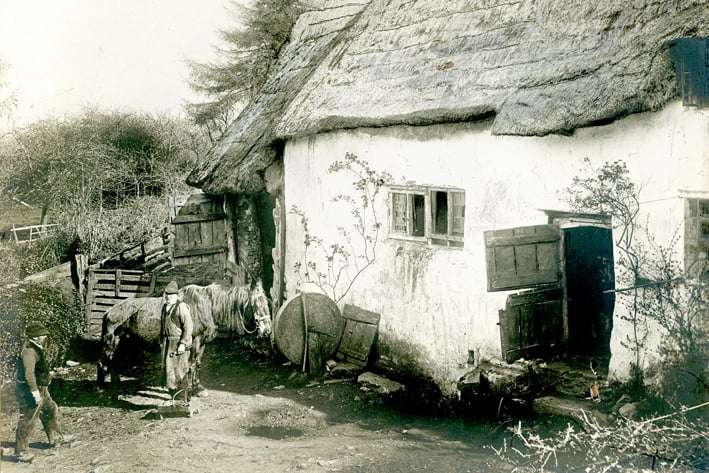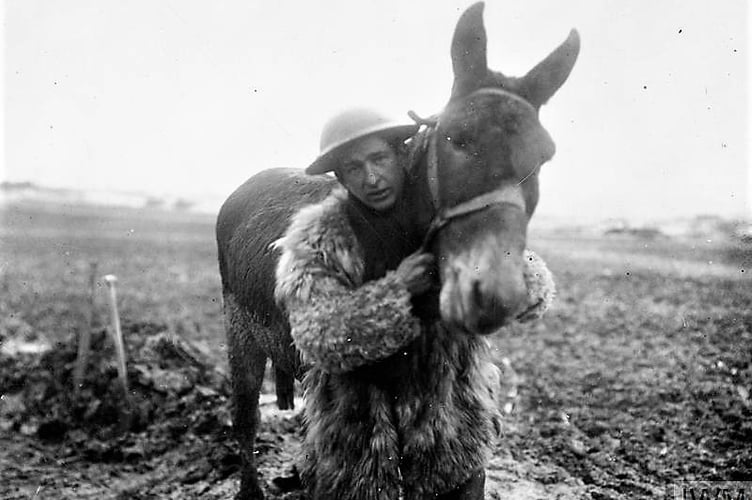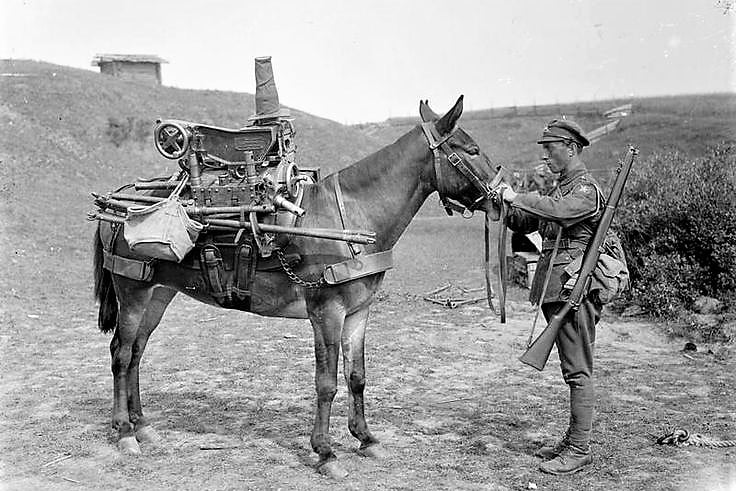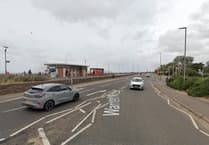IT was just over a century ago that Minehead echoed to a noise never heard before or since - the sound of the town being invaded by mules.
For 18 months, residents had to become accustomed to hundreds of restless whinnying mules charging through the town as soldiers on horseback tried vainly to control them on the last leg of a journey which had started weeks earlier in the USA and South America.
Was it surprising that shopkeepers boarded up their windows when a train-load of mules - destined for war-service training on local farms - was due to arrive at Minehead station?
“Just imagine the chaos which must have been caused when 500 mules descended on the town every six weeks,” said Rita Tremain, well-known in the area as a homeopath and a lifelong horsewoman and horse charity campaigner, who has researched this little-known chapter in Minehead’s history and became fascinated by what she found.
At least 5,000 mules - a cross between a horse and a donkey - came to Minehead in 1915-16 for six weeks of training to prepare them for the bloody war on the First World War’s Western Front.
They were sorely needed. At the start of the war, the British army owned 25,000 horses - nowhere near enough for war service - and another 165,000 were bought or conscripted but thousands died in the first weeks of war and mules were brought in to take over from warhorses.
By the end of the war, the army owned 250,000 mules. They were considered braver and more intelligent than horses and carried heavier loads of food, weapons and supplies to the front line.

Most of Minehead’s mules ended up at a training centre at Bratton Court Farm two miles from the town centre, and others went to farms at Ellicombe, Withycombe, Dunster and Wiveliscombe.
It was while keeping a horse at Bratton Court farm that Rita became intrigued by evidence of something other than farming occurring there, including a five-ton weighing station and discarded mule shoes. “I kept one in my handbag for years,” she confessed.
The mules were transported in railway horse boxes, unloaded at Minehead station and driven up the Avenue and through the town to Bratton, two miles away, by soldiers on horseback who became known as the “Bratton Light Horse.”
Soldiers and local men employed to look after them soon found that the phrase “obstinate as a mule” had a very real meaning. Minehead hospital dealt with dozens of kicks and bites.
One man working at Bratton at the time told the Free Press: “Most of us had never even seen a mule before and we didn’t understand their ways. But once they trusted you, they could be as good as gold. If they didn’t, God help you!”

Rita explained: “Mules are strong and hardy so with a shortage of horses, agents were sent as far afield as the southern states of America and Argentina to find mules to serve on the Western Front.
“Soon literally thousands of mules were being driven to railheads, loaded onto trains for the coast and shipped across the Atlantic to Liverpool and Avonmouth. Mules were penned in the hold for weeks on end, not only at the mercy of the wind and waves but enemy action too.
“For instance, the SS Armenia was torpedoed off the coast of Cornwall in 1915 and 1,400 mules were drowned, as well as six of the farm boys recruited in the southern United States to look after them on the voyage, who refused to leave them and went down with the ship, still trying to free the mules from the hold.”
After a brief period of rest and recuperation, those that survived the voyage were loaded once more on to trains from Avonmouth and brought to Somerset for training and to be shod, before being allocated to regiments and sent to the front.

The destination of the mules was dictated by railway routes and over a period of 18 months, thousands of mules arrived in Minehead at the end of the Great Western Railway branch line, destined for the Bratton Estate which had been leased by the government as a mule depot.
In October 1915 the Free Press reported that the workers at Bratton and Ellicombe had been recruited into the army under new government regulations.
“Mr R C Rose took the rank of captain and was placed in charge of the Bratton dept. Mr W Withycombe from Bratton was appointed captain and moved to the Axebridge depot, taking 33 Bratton men with him.
“The 99 remaining at Bratton and Ellicombe were to be known as F Squadron, Army Service Corps Remounts, and will shortly appear in khaki, a neat and serviceable uniform being supplied.”
“The sheer scale of this operation on the edge of Exmoor gives us a glimpse of the enormous effort rural communities threw into the war effort,” Rita said. “Bratton farm was geared up to support approximately 500 mules, with 120 men at any one time to train and care for them.
“A weighbridge still exists with a plate inscribed with the date 1915, advertisements went into the local press inviting tenders to supply 60 tons of hay and 1000 lb. of bran daily, and mule shoes have been found on the farm.
“The forge, which is still in use, was busy preparing animals due to leave. The photograph of them standing patiently at the station waiting to start another long journey is particularly poignant.”

Once in France, mules lost no time in distinguishing themselves in war. A soldier wrote to his family after one horrific campaign: “My life and that of the regiment was saved by our mules. We were so dependent on them to deliver the goods of war.
“They survived terrible battle conditions better than horses and will keep going long after donkeys and horses have given up. Even on reduced rations, mules didn’t fall sick and were incredibly brave under fire.”
By the end of 1916, mules and horses were being phased out, replaced by lorries and trains. After the war, the government tried to interest British farmers in taking the mules who survived, but there was no tradition of using them in Britain.
“So having come so far and suffered so much, many mules were sold to work on French and Belgian farms while those no longer fit for heavy work ended up in continental abattoirs,” Rita said. “A sad end for unsung heroes.”





Comments
This article has no comments yet. Be the first to leave a comment.